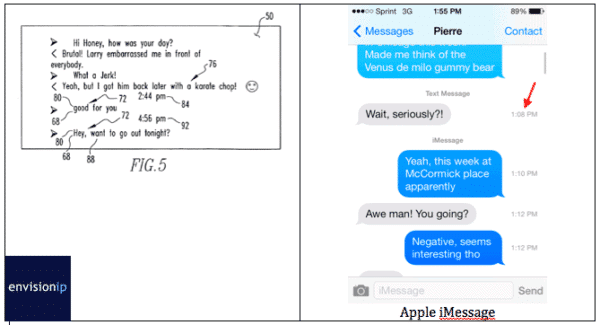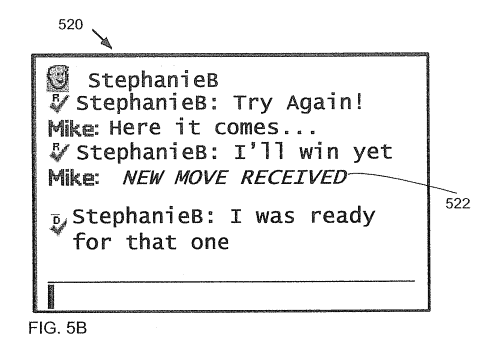
 Earlier this week, BlackBerry filed a patent infringement suit against Facebook, Instagram, and WhatsApp over a number of patents it owns. There has been much speculation in recent years surrounding BlackBerry’s patent monetization strategy, and questions lingered around whether the company would start to aggressively assert its patent portfolio to drive revenue.
Earlier this week, BlackBerry filed a patent infringement suit against Facebook, Instagram, and WhatsApp over a number of patents it owns. There has been much speculation in recent years surrounding BlackBerry’s patent monetization strategy, and questions lingered around whether the company would start to aggressively assert its patent portfolio to drive revenue.
In a report published by PatentVue last February, BlackBerry’s 44,000+ worldwide patent portfolio appeared ripe for litigation and licensing, in part due to their relative strength based on reverse citations. In light of the recent complaint against Facebook et al., Envision IP analyzed the seven patents asserted by BlackBerry to determine the merits of the case, as well to determine if other third-parties could potentially be future targets of these patents.
US 7,372,961, entitled “Method of public key generation”, was acquired by BlackBerry in 2016 from its purchase of Certicom. Certicom is a leading software security firm which pioneered elliptical curve cryptography. The patent has a priority date of 2000. The ‘944 patent claims are directed to generating public and private keys for cryptographically securing data. The claims are not specific to messaging and communications, so there may be potential assertion value across various industries here where key-based encryption is used, such as in the finance, e-commerce, and enterprise information technology sectors.
In addition, the claims recite generating a seed and performing a hash function on the seed. Such language appears very relevant to blockchain-based encryption, and specifically for storing and securing cryptocurrency wallets which can rely on a seed that is hashed. As such, the ‘944 patent may have additional monetization value across various industries.
The ‘961 patent was asserted by BlackBerry once before against Avaya, Inc. on July 27, 2016 (Blackberry Limited et al v. Avaya Inc., 3:16-cv-02185). Interestingly, this was the same date that BlackBerry acquired the patent based on the USPTO assignment record. The case against Avaya was terminated on February 23, 2018 pursuant to a joint stipulation of dismissal filed by the parties.
US 8,279,173, entitled “User interface for selecting a photo tag”, appears to have broad claims around tagging photographs. Claim 1, for example, recites:
“A method of selecting a photo tag for a tagged photo, comprising: displaying a tag list including tags from one or more tag sources matching a search string; displaying a tag type indicator for each tag appearing in the tag list, said tag type being indicative of a tag source associated with the tag.”
Figs. 3-4 of the ‘173 patent are all related to Facebook’s tagging feature, as shown below:
The claims appear broad enough to read on various social platforms that incorporate photo/content tagging. The ‘173 patent and its claims appear to have been crafted specifically with Facebook in mind, potentially as an infringement or licensing target. Other social networking platforms with photo-and content tagging features, such as Snapchat, Twitter, Pinterest, Houzz, and others, could be potential future targets of the ‘173 patent.
US 8,209,634, entitled “Previewing a new event on a small screen device”, has claims more specific to messaging, and which relate to providing a visual indication of the number of pending/received messages, as shown in Fig. 5 below. The ‘634 patent has a 2003 priority date. These claims could potentially read on third-parties applications that, for example, provide an email, message, calendar item, or voicemail count next to a corresponding icon on a smartphone display. One well known example is Apple’s iOS that provides an e-mail message indicator as shown below, as well as various iOS applications also offer similar bubble-type indicators:

US 8,301,713, entitled “Handheld electronic device and associated method providing time data in a messaging environment”, has claims related to providing a timestamp in a message. An embodiment of the invention is shown in Fig. 5 below. The timestamp is generated based on a duration of inactivity. The ‘713 patent has a 2003 priority date.
These claims could potentially read on third-party applications with a wall or stream-like message feed showing a time-stamped conversation, such as Apple’s iMessage:

US 8,429,236, entitled “Transmission of status updates responsive to status of recipient application”, appears to have relatively broad claims (based solely on the number of elements in the claims) related to transmitting messages based on a status of the receiving device. Without reviewing in more detail it is difficult to determine if there is potential third-party infringement in the marketplace currently. The ‘236 patent has a 2009 priority date.

US 8,677,250, entitled “System and method for switching between an instant messaging conversation and a game in progress”, has claims related to providing notifications in an instant-messaging interface, where the notifications are specific to gameplay, as shown in Fig. 5B below. There may be third-party applications for online gambling and multi-player games which may read on these claims. However, this patent may not likely read on non-gaming application, such as general messaging platforms, as all of the independent claims specifically recite game play. The ‘250 patent has a 2006 priority date.
US 9,349,120, entitled “System and method for silencing notifications for a message thread” is also messaging related, and has claims covering silencing and activating message threads. These claims (based solely on the number of elements in the claims) appear to be the narrowest of the patents in suit. The ‘120 patent has a 2009 priority date.
In summary, it certainly appears that the patents asserted against Facebook et al. may have further assertion potential. US 8,279,173, US 8,209,634, and US 8,301,713 appear to be the most interesting in terms of potential current third-party infringement. It is important to note that this assessment is based solely on a face reading of the claims, and without any review of the file history or determination of actual infringement or a claim construction analysis.
Besides US 7,372,961, none of the asserted patents have been involved in an post-grant proceedings or litigation, so it is not immediately clear how strong these patents are from a prior art standpoint. Regarding a Section 101 challenge under patentable subject matter, none of the asserted patents are listed in Class 705, which is the business methods classification at the USPTO. Many of the asserted patents are listed in various software-related classifications however, such as Class 708, 709, and 715.
If BlackBerry can obtain a successful judgement or licensing settlement as a result of this suit, we would not be surprised if the company began to further assert these, and possibly other patents, from its massive portfolio.
Leave a Reply
You must be logged in to post a comment.





 Share
Share Tweet
Tweet Share
Share




Comment